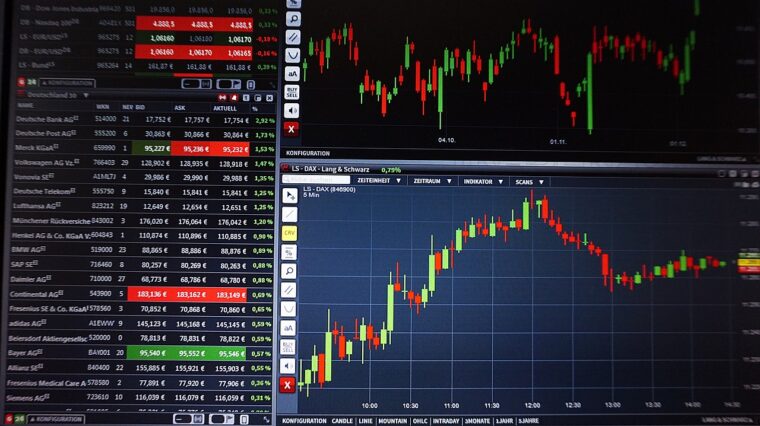As cryptocurrency trading gains in popularity, understanding the fundamental aspects of this domain becomes crucial. One such fundamental element, the ‘pip’, plays a pivotal role in shaping a trader’s journey towards consistent profitability. This blog post is designed to provide a comprehensive guide on how to calculate pips in the crypto market.
The understanding of pips, traditionally a forex concept, helps traders in quantifying their profits and losses. A good grasp of this concept can enhance trading strategies, enabling traders to capitalize on price movements in the ever-evolving crypto landscape.
Understanding Pips in Forex and Crypto Trading

‘Pip’ is an acronym for ‘Point in Percentage.’ In forex trading, a pip refers to the smallest price movement that a given exchange rate can make based on market convention. Typically, most currency pairs are quoted to four decimal places, with the smallest change being the last decimal point – equivalent to one pip.
When it comes to cryptocurrencies, pips still serve as a measure of price movement. However, due to the significant price differences between forex and cryptocurrencies, the pip in crypto trading often refers to smaller price movements. For instance, in Bitcoin trading, a pip refers to a change in the last two decimal places of the price, which are typically represented in satoshis (the smallest unit of Bitcoin, 0.00000001 BTC).
Understanding pips’ function is crucial as they provide traders a standardized measure of price change, enabling them to calculate potential gains or losses.
Pips Calculation for Major Cryptocurrencies
Calculating pips for cryptocurrencies like Bitcoin, Ethereum, and Ripple follows a relatively straightforward method. The general formula is:
(Number of pips) = |(Price at exit point – Price at entry point)| / Pip unit
For example, let’s assume you bought one Bitcoin at $35,000.00 and sold it at $35,050.00. Given that a pip unit for Bitcoin is 0.01, you would calculate the number of pips as follows: (35050-35000) / 0.01 = 500 pips.
It’s important to note that the number of pips will remain the same for both buying (going long) and selling (going short) scenarios, as we’re primarily concerned with the absolute change in price.
Pips Calculation for Altcoins
Altcoins can present a unique challenge in pip calculation due to the differing numbers of decimal places. Nevertheless, the formula remains the same. The only difference is in the pip unit, which corresponds to the minimum price change. For example, if an altcoin is quoted up to eight decimal places, the pip unit would be 0.00000001.
Let’s say you purchased an altcoin at a price of 0.00001000 and later sold it at 0.00001050. Here, the number of pips gained would be calculated as (0.00001050 – 0.00001000) / 0.00000001 = 5000 pips.
If you’re having any issues with doing these calculations on your own, don’t be afraid to contact outlets such as bitcodemethods.com and seek the necessary help.
Pip Value and Position Sizing

Pip value refers to the change in your account balance for a one-pip move in the market. It’s essential in determining your position size – the number of units of a currency pair (or cryptocurrency) you buy or sell in a trade. The position size should be calculated based on your risk tolerance and account balance to prevent significant losses.
For instance, if you’re trading Bitcoin, and you choose to risk 1% of your $10,000 account per trade, the risk amount will be $100. If your stop loss is 50 pips away, the pip value will be $100/50 = $2 per pip.
Calculating Profits and Losses in Crypto Trades
Your profits or losses in a trade can be calculated by multiplying the pip difference between your entry and exit point by the pip value.
For instance, let’s assume you went long on Bitcoin, entering at $35,000.00 and exiting at $35,050.00. If your pip value was $2 (as calculated in the previous section), your profit would be 500 pips x $2 = $1000.
The same method applies to losing trades. For example, if you had a short position and the price increased by 300 pips, your loss would be 300 pips x $2 = $600.
Factors Affecting Pips and Profitability
Multiple factors can influence the number of pips you can gain or lose in a trade. These include volatility, liquidity, and overall market conditions. High volatility and liquidity can result in larger price changes, leading to more pips being won or lost. Understanding these factors and tailoring your trading strategy accordingly can significantly impact your trading profitability.
Currency Conversion and Cross Pairs
Crypto trading often involves dealing with cross pairs, which include different cryptocurrencies. This introduces the need for currency conversion when calculating pips. The principle remains the same; the only difference is that you would need to convert the pip value to your account currency, considering the current exchange rate.
The Role of Leverage in Pips Calculation

Leverage can significantly impact your profits or losses in crypto trading. Leverage is a tool that allows traders to control larger positions with a smaller amount of funds. This means that the number of pips you gain or lose will be multiplied by the leverage ratio. However, high leverage also comes with high risk and should be used with caution.
Tracking and Recording Pips
Keeping an accurate record of your trades, including the number of pips gained or lost, can provide valuable insights into your trading performance. Tools such as trading journals or software can help you track and organize this data efficiently.
Common Mistakes and How to Avoid Them
Common mistakes in calculating pips often stem from misunderstanding the pip unit or applying incorrect formulas. These mistakes can be avoided by taking time to understand the fundamentals of pips and practicing calculations with different crypto assets.
Conclusion
Understanding and accurately calculating pips is a vital component of successful crypto trading. The knowledge can aid in strategizing trades, managing risks, and maintaining consistent profitability. We hope this comprehensive guide serves as a stepping stone towards a successful trading journey in the crypto world. Remember, every pip counts!
